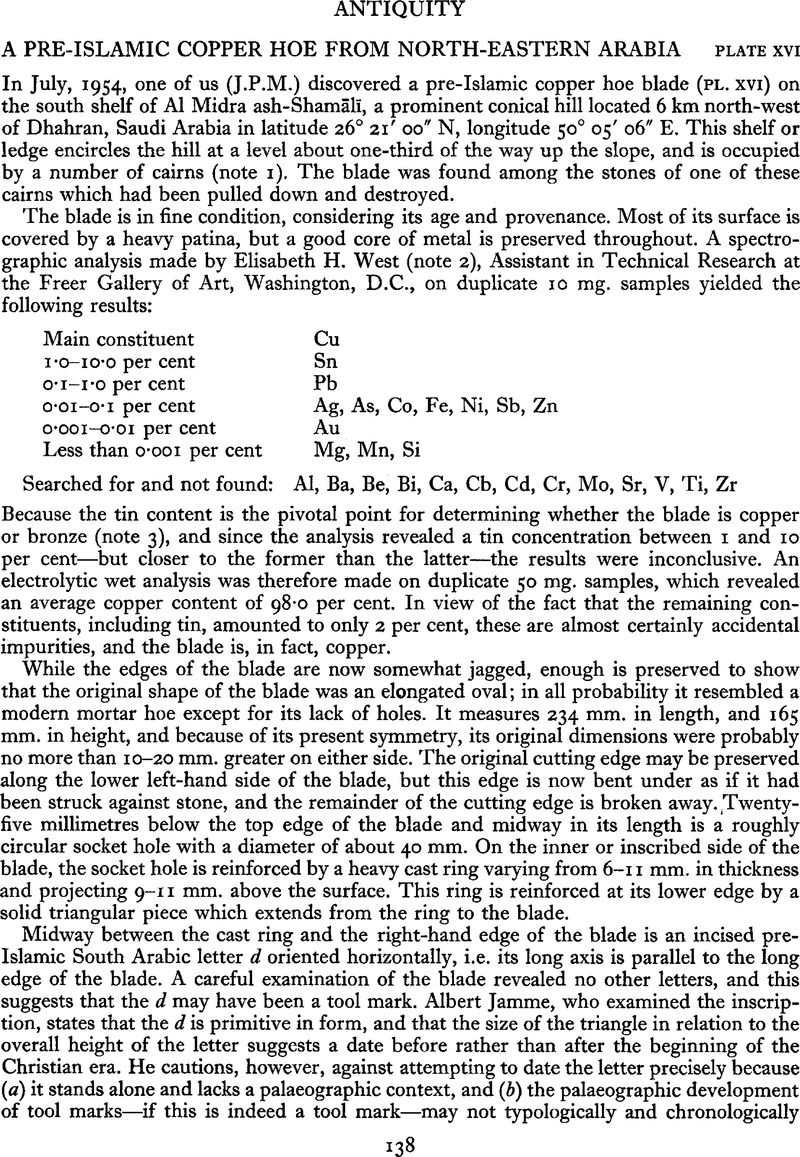No CrossRef data available.
Published online by Cambridge University Press: 02 January 2015

(1) Cairns are ubiquitous in the Dhahran area. See Cornwall, T. D., ‘Ancient Arabia: Explorations in Hasa, 1940-41’, The Geographical Journal, vol. 107 (1946), 36 CrossRefGoogle Scholar. Cornwall also reports that he found many Aint artifacts on this ledge, including some which he assigned to the Palaeolithic period and others to the time of the cairn builders (39).
(2) We wish to express here our gratitude to Miss West for conducting these analyses.
(3) Only alloys having a tin concentration of more than 2 per cent are regarded as bronze, see Lucas, A., Ancient Egyptian Materials and Industries (London, 1934), 174 Google Scholar; Forbes, R. J., Metallurgy in Antiquity (Leiden, 1950), 250 Google Scholar.
(4) Oral communication.
(5) See note 1 above.
(6) Ghirshman, R., Fouilles de Sialk, vol. 1 (Paris, 1938), p. XXIII: 8, LXXXIV S. 251, and p. 123 Google Scholar.
(7) Cf. Tarbell, F. B., ‘Antiquities from Boscoreale from the Field Museum of Natural History’, Field Museum of Natural History: Anthropological Series, vol. 7, no. 4, publication no. 152 (Chicago, 1912), 211, pl. 163, nos. 26150-53Google Scholar; and Maiuri, A., La Casa del Menandro, vol. 1 (Rome, 1933), 461–465, figs. 184 and 185, nos. 4953, 4975, and 4955Google Scholar. I am grateful to Miss Dorothy Kent Hill of the Walters Art Gallery, Baltimore, for calling these references to my attention. A somewhat similar iron hoe was found in House K at Ehnasya by Petrie and assigned to the 3rd century A.D., cf. Petrie, W. M. F., Ehnasya, Egyptian Exploration Fund no. 26 (London, 1905), 23, p. 29 Google Scholar lower right comer.
(8) Petrie, W. M. F., Tools and Weapons (London, 1917), pl. LXVII: 1, 2, 4, 8, and pp. 54-55. For Egyptian hoes and hoes from Europe and Asia, see pls. XIX-XX and pp. 17-19Google Scholar.